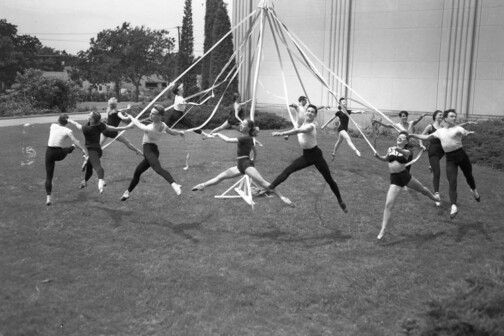First thing first. I spent much of this past weekend buzzing about various parts of Fort Worth that I hadn’t yet explored before. Previously I had spent a decent amount of time in and around downtown, the West 7th development, TCU, and the Cultural District and that was about it. As part of various wedding events and the logistics of me getting to certain places without a car invariably led me to places I had not yet been, like meeting up with Kevin of Fortworthology for coffee/tea at the new local coffee house on Magnolia (Avoca) before I headed to wedding party rehearsal.
It pains me to say it, but Fort Worth has much better bones left in tact than do we here at the bigger brother (sister? What sex would Dallas be if we were to anthropomorphize?) Magnolia Ave is like Bishop Arts but like 5x of it, including the active, engaged young professionals that have bought into the neighborhood to the south. It surely is only a matter of time until the broken fabric to the north, between Magnolia and downtown is redeveloped.
In another part of town, much of North Main Street between downtown and the stockyards was surprisingly intact as well. Only the remaining fabric seemed to oscillate from one side of the street to the other, rarely mirroring proper form on both sides of the street. On the other hand, North Main was proud home to this byoot (sic):
It might just be the single ugliest building I’ve ever laid eyes on. So they also have that on us.
——————————-
Elsewhere on the interwebs:
A bill in the TX house could use your help. It is about Complete Streets and would require any city using state or federal money to make the street complete. Of course, this wouldn’t effect highway dollars, which would be pretty killer to tie those two things together since they, when running through urbanized parts of the city, are very much to blame.
————————–
Americans like Olmsted and Scott did not invent the lawn; lawns had been popular in England since Tudor times. But in England, lawns were usually found only on estates; the Americans democratized them, cutting the vast manorial greenswards into quarter-acre slices everyone could afford. Also, the English never considered the lawn an end in itself: it served as a setting for lawn games and as a backdrop for flowerbeds and trees. Scott subordinated all other elements of the landscape to the lawn; flowers were permissible, but only on the periphery of the grass: “Let your lawn be your home’s velvet robe, and your flowers its not too promiscuous decoration.”
Of course, also by democratizing the “estate yard,” you’re also bringing it down to levels incapable of maintaining it to a certain standard (which inevitably led to nigh-fascistic homeowners association strictures). Like so:
via Old Urbanist. In the words of Lloyd Christmas, “Austria?…beeyoooootiful.”
————————
Old Urbanist walks through a comparison of European suburbs and American suburbs illustrating the (obvious) difference, but also spelling out that there really is no value to the front lawn (unless you’re growing something on it. And even then, it might as well be more contiguous and in the back for a number of reasons including that it is inefficient to have distance between the conduit of movement (the road) and the interface with the use (building front door).
——————————
Similarly and ironically, this is not in anyway addressed in this particular column. They’re stuck simply in the “moving traffic” realm, not in the overall impact of “moving traffic” on possibly more important things like more economically and environmentally efficient and effective ways of making the exact same connections. Predictably, transportation planners and engineers jump into the fray and further discredit their entire profession by not getting it AT ALL. So I felt compelled to weigh into the comments:
Lol. “traffic demand models.” the ones that are rigged to conclude more supply is always necessary? Like or don’t like this article because it supports or contradicts your assumptions, pick up Traffic by Tom Vanderbilt for a deeper view of the issues.
What happened in the cases cited above as well as in Seoul and Milwaukee which removed a freeway b/c they couldn’t afford to maintain it (expect far more of that around the country), resulted in improved overall connectivity and spatial integration as freeways are about regional to regional connectivity, undermining local connectivity, the backbone of cities.
Furthermore, what occurs is a form of “import replacement.” more things are done locally, now that a freeway is removed, a place becomes safer and more desirable, thus denser and more valuable.
Think about these examples as well. Pompidous widened the car travel lanes essentially from building face to building face. It pushed out all the pedestrians and all the businesses died. Since the mid 90s, Paris has systematically been replacing the travel/parking lanes of Champs Elysees along the side with increased pedestrian space. It’s now some of the most valuable real
estate in the world.
When Copenhagen began removing cars and parking spaces all of the businesses objected. They’re doing better than ever today because people want to be there.
And lastly, it is important clarify the difference between intracity and intercity freeways. The intercity are important in linking regional economies. The intra are destructive and disrupt local economies. This is why Eisenhower was appalled when cities and states bastardized his interstate system and ran amok with them.
People liked hitting “dislike” on my post (“OMG that disrupts my worldview!! How dare you!”). I would be perfectly happy to debate any and everyone on this issue. Because I know it better than they do. But they know how to move cars. Of course, none bothered to engage in my bait of a comment.
Instead, they decided to further discredit their profession to the point that soon it will surely prove worthless and thus extinct when they juxtapose statements like, “I’m a professional” and “efficiency is a staple of sustainability.” Oh yeah professor? Sort of like your work making some road super-efficient getting from point A to point B some distance away actually prevents fare more efficient (in both time and energy) of say…those Fort Worth South residents bicycling to their various needs and wants on Magnolia?
Seriously. Just retire. You’re doing more harm than good. But that could describe large chunks of the entire economy. We’ve got loads of rebooting to do.
Get the D Brief Newsletter
Dallas’ most important news stories of the week, delivered to your inbox each Sunday.







